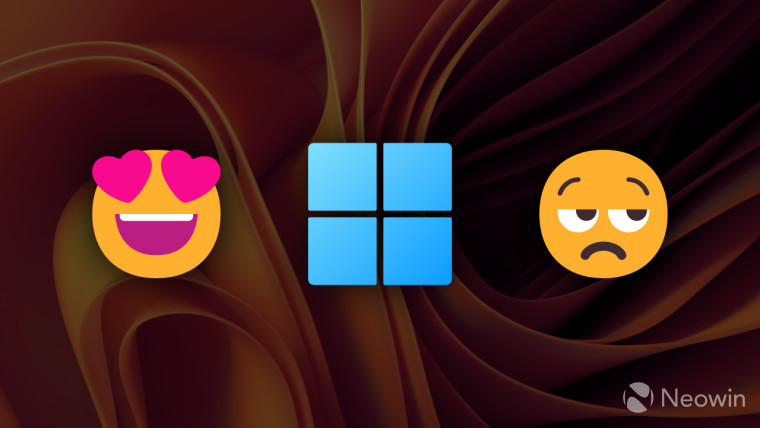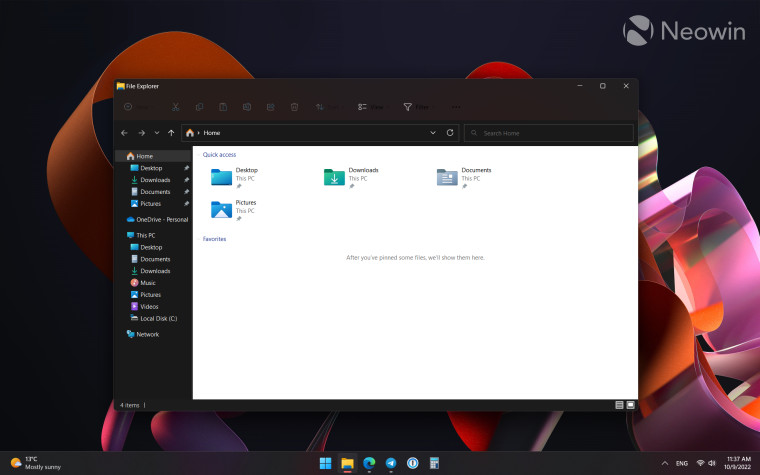
Windows 11 has introduced many neat features and changes. Some users like productivity improvements, others enjoy using Android apps on their computers, and several are happy to see accessibility enhancements. To me, the best thing about Windows 11 is its user interface. The newest operating system is a breath of fresh air after seven years of too much primitive UI in Windows 10.
Although I agree that Windows 10 is better than Windows 11 in some aspects, they are not enough for me to justify ditching the eye candy of the latter. Windows 11's taskbar does not trigger me as much as other users, so I am willing to accept some of its pittfalls for a much prettier design. After all, by now, I am fine with right-clicking the Start menu button to launch Task Manager. Of course, I understand that not many users share my approach, so you are free to argue with me in the comments.
I do not want to sound like a blind fanboy, and I know that Windows 11 is still far from macOS or something you can call a consistently beautiful operating system. Microsoft still has a lot of room for improvement here, and in this article, I list five things I want the software giant to address in Windows 11 to make it better looking. This is not a definitive list, just a few rough surfaces that annoy me as I use Windows 11 daily, and I am sure you could add more to it.
1 - Automatic Theme Switching
For me, using dark mode during the daytime is as uncomfortable as using light mode at night. Although Windows and its apps received dedicated dark mode many years ago, Microsoft still refuses to give users a simple yet genius feature: automatic theme switching.

I am no software engineer, but I am confident that implementing automatic theme switching is not an incredibly time-consuming or difficult task, especially when the foundations are already there. Every mainstream operating system lets you set custom hours for theme switching or tie the feature to sunrise/sunset. It is an essential accessibility option that Microsoft keeps ignoring for some reason.
Fortunately, developers thrive where Microsoft fails. Windows Auto Dark Mode, an ingenious third-party app and a winner of the Microsoft Store Awards 2022, has been among my favorite programs for years. But even though I love Auto Dark Mode and some of its advanced features, I want Microsoft to teach its operating system how to switch themes at sunrise and sunset without third-party software. It would also be great to see Windows 11 change from dark mode to light and vice versa without the UI going haywire.

2 - Battery percentage on the taskbar
Battery percentage on the taskbar is another feature Microsoft should copy from the other operating systems. The battery indicator in Windows 11 is a slightly confusing thing. It clearly has fewer charge level steps compared to what Windows 10 has, and I often think my laptop has much less battery than the indicator tries to tell me. Just look at the screenshot below.
The indicator seems to be missing a third of a charge rather than 21%. Sure, you can get an exact battery level by hovering the cursor over the battery icon, but that requires extra steps, something I do not want to do as a person that gets distracted way too easily. Besides, our laptops and tablets have large displays with screen-wide taskbars that can spare several pixels to accommodate a slightly improved battery indicator.
3 - New paste dialogs
My favorite change in the Windows 11 2022 Update is undoubtedly the redesigned volume and brightness sliders. Still, Windows 11 retains many old user interface bits desperately waiting for a fresh coat of paint. The copy/paste dialog (and dialogs overall) is one of such parts I want to see redesigned.

We can start with simple dark mode support, something that enthusiasts managed to implement in tweaking software, such as StartAllBack. Besides, Microsoft could swap the old Windows 8-styled progress bar in favor of something more modern and similar to the new volume/brightness slider. It might sound like I am nitpicking, but the thing is that we encounter dialog boxes and copy/paste UI far more often than the redesigned Task Manager with its fancy interface and dark mode support.
4 - Confusing app pinning
Here is another Windows 11 UI area that grinds my gears. Although Microsoft restored the ability to drag and drop files to the taskbar, pinning apps by doing the same is weirdly confusing. You cannot pin an app to the taskbar from the Start menu, and all you get is a stop icon indicating a prohibited action. But go to the "All apps" list, drag an app, and voila - it appears on the taskbar like nobody's business.

At the end of the day, it all comes to the fact that Windows 11's taskbar and Start menu remain raw and in dire need of more improvements. Windows 11 is the next-gen operating system that should focus on improving Windows 10's strengths instead of crippling them.
As I said before, I am the kind of user who can accept some feature trade-offs in favor of eye candy. But I can also understand that the force of habit and muscle memory is too strong for some. Many people stay away from Windows 11 only because of the downgraded taskbar with its numerous issues. To name a few: no right-click to launch Task Manager (addressed in the latest Dev builds), no option to hide volume/network/battery indicators separately, botched drag-and-drop, puzzling Start menu, and many more. Sadly, these complaints still remain relevant even one year and one major update after the launch of Windows 11.
5 - Improve performance and responsiveness.
I like Windows 11's user interface and overall design language. It is beautiful, sleek, and modern. Unfortunately, it is also notably slower than Windows 10. Context menus take much longer to render, and often you can spot their parts load on the fly. For example, I have lost count of how many times Windows Terminal randomly disappeared from the right-click menu. Also, the control and notification centers sometimes refuse to open, or widgets take too long to start.
I have experienced all these symptoms on my laptop with an 11th-gen Intel Core i3 (not a powerhouse, but also far from being a minimum-supported processor) and my desktop with the Ryzen 5 2600. And do not tell me to buy newer or more powerful hardware—the latest data from Valve shows that your average Joe does not run the Intel Core i9-12900K and RTX 3090 Ti connected to a 300Hz monitor.
Closing Words
Windows 11 is a beautiful operating system I am delighted to use daily. It is great to see Microsoft finally investing more into making Windows more stylish, modern, and fluent. It is an operating system that gets the job done while also looking good. Still, Microsoft should not stop halfway. UI consistency and better attention to detail will help more users deal with some of Windows 11's shortcomings. It will help me, at least, because I am 100% sure great visuals and design consistency are the only things modern Windows versions lack. And yes, the taskbar needs some work too...


















25 Comments - Add comment